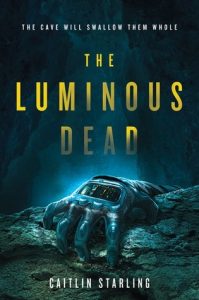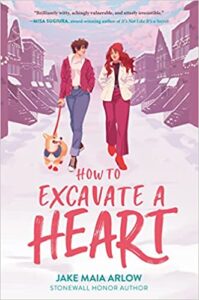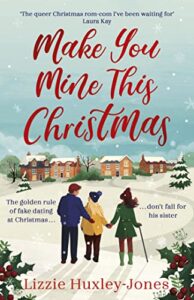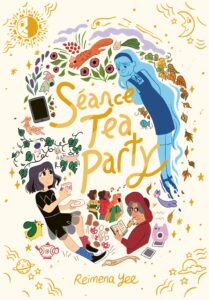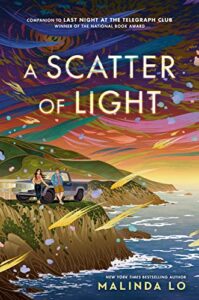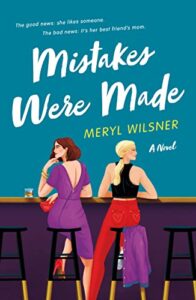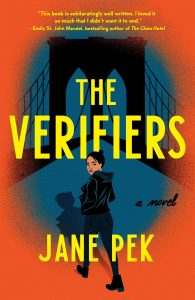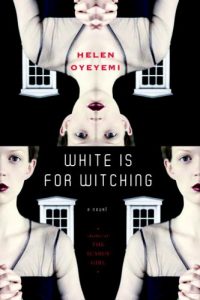Amazon Affiliate Link | Bookshop.org Affiliate Link
I have been really into horror lately, and finding a lesbian sci-fi horror was a real boon for me, and The Luminous Dead by Caitlin Starling was a real page-turner. With a spine-tingling atmosphere, a killer setting, and a cast of two, The Luminous Dead draws you into the story as steadily as the characters descend into the cave, and the final rush of action had me up until 3am to finish it.
On a distant planet, Gyre knows the only way to get the money she needs to get off planet and find her mother is underground, where the only valuable resources around are. Caving is lucrative, if you cash out before what lurks underground catches up with you. For Gyre, the risks are worth the reward, and she’s sure her skills are up to the task, even if her resume has been faked, until the particularly plum assignment she’s snagged starts seeming like a setup. For one thing, there’s not a whole team on the other end of the communication array of her hermetically-sealed suit, there’s just one woman, Em, who is both the coordinator and the financier of the operation. For another, this expedition seems off. The deeper Gyre descends into the cave, the more it becomes apparent that this isn’t a normal cave expedition, but a mission personal to Em, and that Em has not been upfront to Gyre as to her real purpose. Beset by physical dangers and the slow unraveling of her own perceptions, Gyre has to balance the risks of fulfilling Em’s personal obsession with the rewards Em has promised that will fulfill Gyre’s, and the cave may not let either of them succeed.
What I loved most about The Luminous Dead was the masterful use of atmosphere. A cave is already an oppressive and dangerous environment, but on this planet, anyone not in a sealed suit is almost guaranteed to never resurface, and what takes them is the subject of rumors and horror stories but few facts. Any action or any bodily exposure outside the suit could attract danger, on top of normal equipment failure and cave dangers. It’s incredibly claustrophobic and it sets the mood instantly. Gyre is entirely dependent on Em and the suit for air, water, food, even vision, and operating in an environment where the smallest misstep could mean death. Even if this book wasn’t queer, it would have been enthralling for the environmental storytelling alone. Starling did a great job of ratcheting up the tension, both physical and mental, as Gyre starts to react to her worsening environment, and a map at the start of the book had me tracing every step of her journey anxiously.
But then add into this the relationship between Gyre and Em and this book turns explosively engaging. It starts out as strictly employer/employee and with Em as a strict taskmaster with her eyes on the prize, but with only Em on the other end of the line instead of a whole team, things start getting personal quickly. Both of them are keeping secrets from the other but start out in a mutually beneficial arrangement, because they both want and need this expedition to go smoothly. But as personal motivations and secrets start to come to light and unanticipated physical dangers start to appear, the tension between them starts to grow. At the same time, Em starts to care about Gyre outside of the objective of succeeding in her mission, and Gyre starts understanding the nature of what is driving Em. As Gyre struggles with the dangers of the cave and the pressures of her own mind under intense danger and isolation, Em struggles remotely to keep her caver alive and accept the realities and limitations of what is possible in this expedition. It’s a whole pressure-cooker of a relationship, conducted over comm lines while one of the parties is in mortal danger and entirely dependent on help from the other, and it’s riveting.
In conclusion, if you’re looking for a thriller to spice up your dark winter nights, look no further than The Luminous Dead. It’s one of the most exciting books I’ve read in a while, and I couldn’t put it down, almost literally.

